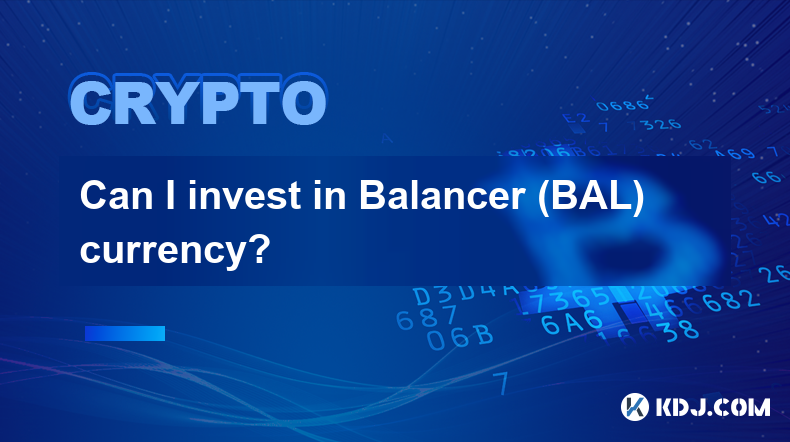-
 Bitcoin
Bitcoin $99,577.7827
2.77% -
 Ethereum
Ethereum $1,933.4035
4.93% -
 Tether USDt
Tether USDt $1.0002
0.03% -
 XRP
XRP $2.2030
2.81% -
 BNB
BNB $616.1256
1.57% -
 Solana
Solana $153.0057
3.62% -
 USDC
USDC $1.0001
0.01% -
 Dogecoin
Dogecoin $0.1830
5.50% -
 Cardano
Cardano $0.7151
4.50% -
 TRON
TRON $0.2505
1.89% -
 Sui
Sui $3.7051
8.86% -
 Chainlink
Chainlink $14.7665
5.95% -
 Avalanche
Avalanche $20.9867
5.45% -
 Stellar
Stellar $0.2722
3.79% -
 Bitcoin Cash
Bitcoin Cash $413.3602
10.19% -
 UNUS SED LEO
UNUS SED LEO $8.7924
1.21% -
 Shiba Inu
Shiba Inu $0.0...01343
4.39% -
 Hedera
Hedera $0.1859
4.67% -
 Toncoin
Toncoin $3.1187
3.38% -
 Hyperliquid
Hyperliquid $21.6882
1.30% -
 Litecoin
Litecoin $91.9648
-1.05% -
 Polkadot
Polkadot $4.2389
6.22% -
 Monero
Monero $291.7538
1.03% -
 Dai
Dai $1.0003
0.01% -
 Bitget Token
Bitget Token $4.3174
-0.22% -
 Ethena USDe
Ethena USDe $1.0004
0.01% -
 Pi
Pi $0.6225
7.32% -
 Pepe
Pepe $0.0...09208
12.98% -
 Bittensor
Bittensor $404.3195
9.62% -
 Uniswap
Uniswap $5.1820
5.18%
Can I invest in Balancer (BAL) currency?
Balancer (BAL) offers investment potential through its governance token, BAL, providing opportunities to participate in ecosystem decision-making and benefit from protocol growth.
Dec 08, 2024 at 01:48 pm

Can I Invest in Balancer (BAL) Currency?
Balancer (BAL) is a decentralized autonomous organization (DAO) that governs the Balancer protocol, a non-custodial liquidity protocol for the Ethereum blockchain. BAL holders can participate in the protocol's governance by voting on proposals that govern the protocol's direction.
Balancer (BAL) is currently ranked 103rd by market capitalization, with a total circulating supply of 100,000,000 BAL and a price of $5.29.
Factors to Consider Before Investing in Balancer (BAL)
Before investing in Balancer (BAL), it's essential to consider several factors that may affect its value and your potential return on investment. These factors include:
- Market conditions: The cryptocurrency market as a whole is volatile and can be subject to significant fluctuations in value. This volatility can impact the price of BAL and your investment.
- Protocol development: The Balancer protocol is under continuous development, and the success of future developments will impact the value of BAL.
- Competitive landscape: The decentralized finance (DeFi) space is competitive, and Balancer faces competition from various other DeFi protocols.
- Regulatory environment: Cryptocurrency regulations can impact the demand and adoption of Balancer (BAL).
- Your investment goals and risk tolerance: It's important to align your investment strategy with your financial goals and risk tolerance. Consider your investment horizon and how much risk you're willing to take on.
Steps to Invest in Balancer (BAL)
If you've considered the factors mentioned above and decided to invest in Balancer (BAL), here are the steps you can follow:
- Choose a cryptocurrency exchange: Balancer (BAL) is listed on several cryptocurrency exchanges. Choose a reputable and trustworthy exchange that allows you to trade BAL.
- Create an account: You'll need to create an account on the exchange you choose to trade cryptocurrencies, including Balancer (BAL).
- Fund your account: Transfer funds from your bank account or another cryptocurrency wallet to your exchange account.
- Buy Balancer (BAL): Once you have funds in your account, you can place an order to buy Balancer (BAL) using your preferred trading pair.
- Store your Balancer (BAL): After your order is executed, your Balancer (BAL) will be credited to your exchange account. You can store your BAL on the exchange or transfer it to a personal cryptocurrency wallet for added seguridad.
Additional Considerations
Here are some additional considerations before investing in Balancer (BAL):
- Long-term investment: Balancer (BAL) is a long-term investment opportunity. Do not expect to make a quick profit and be prepared to hold your investment for the long term.
- Diversify your investments: Don't put all your eggs in one basket. Diversify your cryptocurrency investments across various cryptocurrencies, including Balancer (BAL).
- Stay informed: Keep yourself up-to-date on the latest news and developments related to Balancer (BAL) and the cryptocurrency market as a whole. Changes can impact your investment's value.
Disclaimer:info@kdj.com
The information provided is not trading advice. kdj.com does not assume any responsibility for any investments made based on the information provided in this article. Cryptocurrencies are highly volatile and it is highly recommended that you invest with caution after thorough research!
If you believe that the content used on this website infringes your copyright, please contact us immediately (info@kdj.com) and we will delete it promptly.
- Dogecoin (DOGE) Price Has the Potential to Experience a Large Increase After Forming a Rare Pattern
- 2025-05-08 18:15:13
- Flare Network's total value locked has spiked by more than 160% over the past two weeks
- 2025-05-08 18:15:13
- EOS Price Surges 20% as the Coin Swaps to Vaulta
- 2025-05-08 18:10:12
- Streamlining Sei's Architecture to Focus Solely on EVM
- 2025-05-08 18:10:12
- Meme Coin Marvel Shiba Inu (SHIB) Could Be Challenged by Fast-Rising DeFi Coin, Mutuum Finance (MUTM)
- 2025-05-08 18:05:12
- Arizona Governor Katie Hobbs signs House Bill 2749 into law, allowing the establishment of a Bitcoin and Digital Assets Reserve Fund
- 2025-05-08 18:05:12
Related knowledge

Is Ethereum smart contract call fee high? How to optimize costs?
May 08,2025 at 09:35am
Is Ethereum Smart Contract Call Fee High? How to Optimize Costs? The world of Ethereum smart contracts has revolutionized the way we think about decentralized applications and blockchain technology. However, one of the most frequently discussed topics within this realm is the cost associated with executing smart contract calls. In this article, we will ...

Is Ethereum Layer2 fee low? How to use it cheaper?
May 08,2025 at 03:56am
The question of whether Ethereum Layer 2 solutions offer lower fees and how to use them more economically is a topic of great interest within the cryptocurrency community. Ethereum's Layer 2 solutions have been developed to address the high transaction fees and scalability issues associated with the main Ethereum network. In this article, we will delve ...

How to calculate Ethereum network fee? How to reduce transaction costs?
May 08,2025 at 02:15am
Understanding and managing Ethereum network fees is crucial for anyone involved in transactions on the Ethereum blockchain. The network fee, also known as gas fee, is the amount of Ether (ETH) required to successfully conduct a transaction or execute a smart contract on the Ethereum network. Calculating these fees and finding ways to reduce them can sig...

What is Ethereum Gas Fee? How to optimize Gas Fee to save costs?
May 08,2025 at 03:43am
Ethereum gas fees are a crucial aspect of interacting with the Ethereum blockchain. Understanding and optimizing these fees can significantly impact the cost-effectiveness of transactions and smart contract interactions. In this article, we will delve into what Ethereum gas fees are, how they are calculated, and provide detailed strategies for optimizin...

How to perform MOVE cross-chain transfer? What to do if the gas fee is too high?
May 07,2025 at 08:03pm
Introduction to MOVE Cross-Chain TransferCross-chain transfers have become an essential part of the cryptocurrency ecosystem, allowing users to move assets between different blockchain networks. One of the popular protocols for achieving this is the MOVE cross-chain transfer. This article will guide you through the process of performing a MOVE cross-cha...

How is the DYDX liquidation price calculated? How is the forced liquidation mechanism?
May 08,2025 at 06:49am
The DYDX liquidation price and the forced liquidation mechanism are crucial aspects of trading on the dYdX platform, a decentralized exchange that allows users to trade perpetual contracts. Understanding these concepts is essential for managing risk and maximizing potential returns. In this article, we will delve into the details of how the DYDX liquida...

Is Ethereum smart contract call fee high? How to optimize costs?
May 08,2025 at 09:35am
Is Ethereum Smart Contract Call Fee High? How to Optimize Costs? The world of Ethereum smart contracts has revolutionized the way we think about decentralized applications and blockchain technology. However, one of the most frequently discussed topics within this realm is the cost associated with executing smart contract calls. In this article, we will ...

Is Ethereum Layer2 fee low? How to use it cheaper?
May 08,2025 at 03:56am
The question of whether Ethereum Layer 2 solutions offer lower fees and how to use them more economically is a topic of great interest within the cryptocurrency community. Ethereum's Layer 2 solutions have been developed to address the high transaction fees and scalability issues associated with the main Ethereum network. In this article, we will delve ...

How to calculate Ethereum network fee? How to reduce transaction costs?
May 08,2025 at 02:15am
Understanding and managing Ethereum network fees is crucial for anyone involved in transactions on the Ethereum blockchain. The network fee, also known as gas fee, is the amount of Ether (ETH) required to successfully conduct a transaction or execute a smart contract on the Ethereum network. Calculating these fees and finding ways to reduce them can sig...

What is Ethereum Gas Fee? How to optimize Gas Fee to save costs?
May 08,2025 at 03:43am
Ethereum gas fees are a crucial aspect of interacting with the Ethereum blockchain. Understanding and optimizing these fees can significantly impact the cost-effectiveness of transactions and smart contract interactions. In this article, we will delve into what Ethereum gas fees are, how they are calculated, and provide detailed strategies for optimizin...

How to perform MOVE cross-chain transfer? What to do if the gas fee is too high?
May 07,2025 at 08:03pm
Introduction to MOVE Cross-Chain TransferCross-chain transfers have become an essential part of the cryptocurrency ecosystem, allowing users to move assets between different blockchain networks. One of the popular protocols for achieving this is the MOVE cross-chain transfer. This article will guide you through the process of performing a MOVE cross-cha...

How is the DYDX liquidation price calculated? How is the forced liquidation mechanism?
May 08,2025 at 06:49am
The DYDX liquidation price and the forced liquidation mechanism are crucial aspects of trading on the dYdX platform, a decentralized exchange that allows users to trade perpetual contracts. Understanding these concepts is essential for managing risk and maximizing potential returns. In this article, we will delve into the details of how the DYDX liquida...
See all articles
























![[2025.05.08] The two routes of Bitcoin continue to be observed, and gold is still bullish. [2025.05.08] The two routes of Bitcoin continue to be observed, and gold is still bullish.](/uploads/2025/05/08/cryptocurrencies-news/videos/routes-bitcoin-continue-observed-gold-bullish/image_500_375.webp)




























































